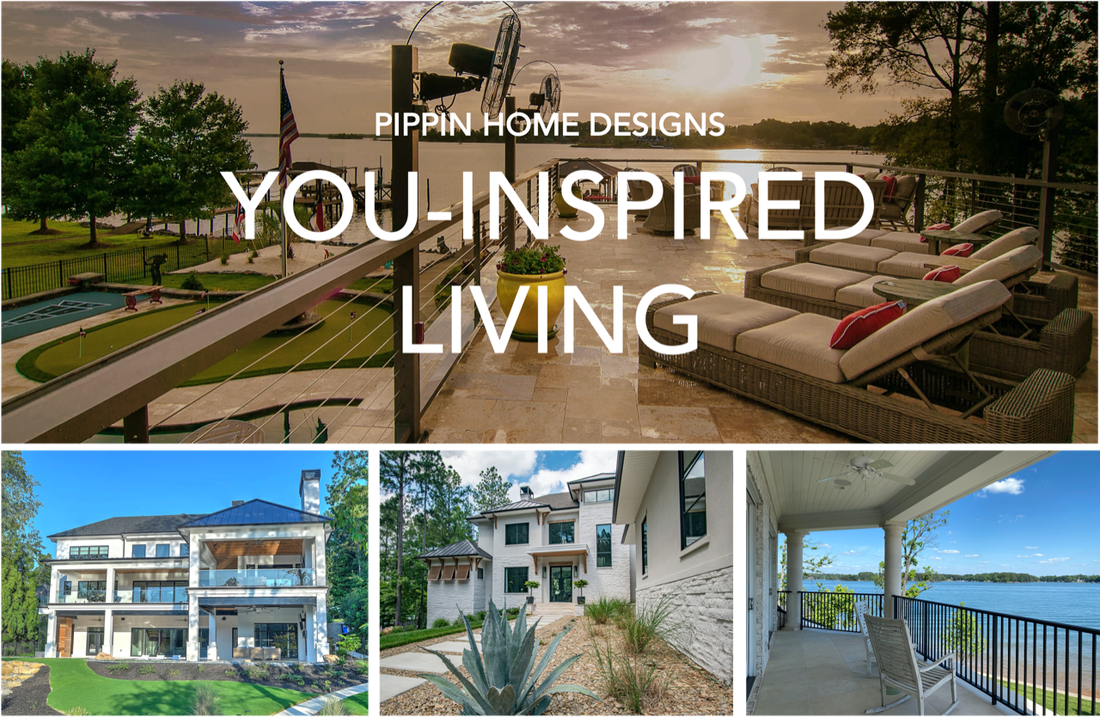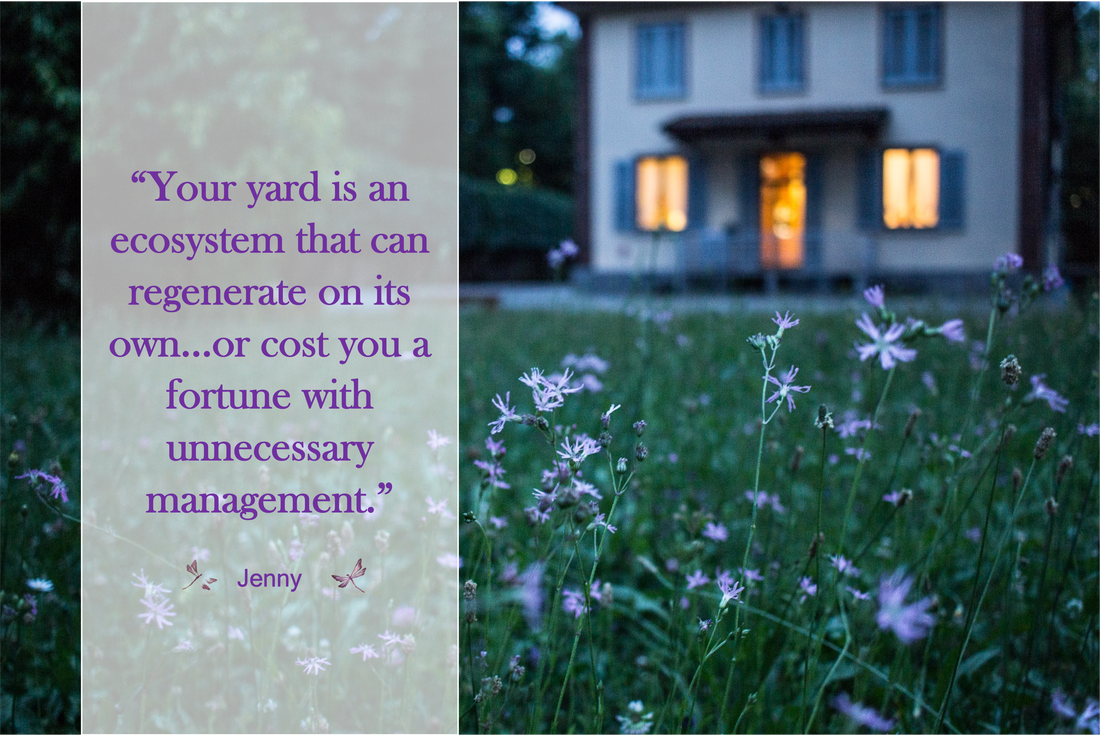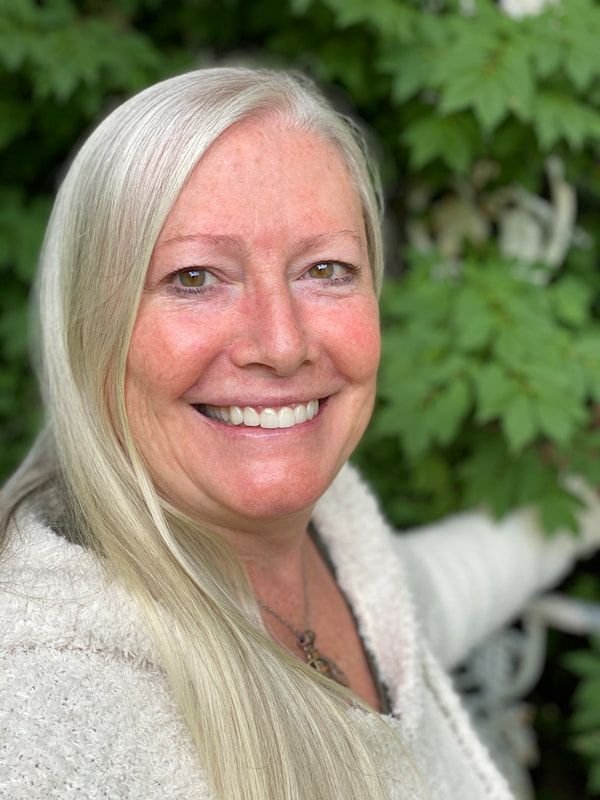
 Easy is often confused for affordable. In the case of home construction, it may be easier to clear your land completely and wipe the slate clean. After all, this is what the typical construction team is accustomed to. However, this unnecessary technique costs you more money in the long run. And sacrifices too much time before you’re able to enjoy the beauty of your outdoor living spaces. In this sixth post of the Regenerative Design Series, I discuss the hidden costs of clearing your land before construction. BE ADVISED, the average construction grading team will try to convince you to follow along with the status quo because it’s easier for them. We encourage you to be a rebel and insist on a more regenerative method when preparing your land for construction. Hidden Cost #1: Your Precious Time Imagine spending your time intimately working with a designer. She creates a home plan integrated into your land as if placed by Mother Nature herself. She sketches a floorplan, porches, and overhangs to work with the sun as it moves across your property. And she captures the surrounding natural beauty through every window frame. A lower-level walkout is carved into the side of a hill, with easy access to waterfront. A stone walkway that leads from your covered patio to the water’s edge inspires intrigue as it meanders around gardens of wildflowers, protected by the shade of tall oaks. There’s a peaceful privacy to this plan. Flowering beautyberry and butterfly bushes delineate your property from your neighbors. While wide sweeping views of the lake beyond are carefully preserved down the central line of sight. Incorporating elements of prospect and refuge that calm the nervous system and communicate safety and serenity. Your front door is designed to open to views, inside and out. With an open floor plan that allows your eye to travel through the interior and beyond your covered porch to a vibrant yard of green that meets the blue of water. A wall of windows intentionally blurs the lines between natural and built environments. Calming patterns of fractals and soothing sounds of waves are designed into every room. However, when it comes time to prepare the land for construction, your building team clears nearly the entire lot. This is what they’ve always done. It’s what they know. You agree unwittingly. You didn’t know there were other options. When your home is finally complete, you’re like a kid on Christmas. This moment is monumental! SO much has gone into the creation of your forever home. You approach from the street side. It’s gorgeous! A perfect representation of YOU and the way you’ve always wanted to live your life! You open the front door, and your gaze scans through the expansive interior and out beyond the wall of windows. Just as was intended with the design. However, the sense of calm serenity you were anticipating is replaced by a pit in your stomach. Your view looks out over a scar on the Earth. You don’t see green. You see red. Red soil where lush plant life once was. You follow your gaze outside to explore further. A walk to the water’s edge is exposed to blinding sun where tall trees once provided shade and shelter. The only remaining trees reside within the mandated 30-foot setback where no construction or removal of trees is allowed at all. You are assured that this is normal and to be expected. “Don’t worry,” your friends and family reassure, “the landscape designer will be able to fix all of this. And in due time you’ll have a beautiful yard.” You’ve spent close to two years from the start of the design process to your move in date. You’ve exhausted your budget and there’s nothing left for a landscape designer. Now, more time is required before you can enjoy the natural views your home was designed to maximize. Much more time. And much more money. Hidden Cost #2: Replacing and Remediating Compacted Soil Clearing your land doesn’t just remove the vegetation. It also removes the precious layer of topsoil. Topsoil contains the highest concentration of microorganisms and is where most of the Earth’s biological soil activity takes place. The red scar of the Earth is what’s left over after all the organic matter is removed. The soil that remains becomes compacted by the large construction equipment that’s repeatedly driven across your property. Reducing soil volume by a whopping 12-20 inches! When soil is altered in this way it loses its ability to clean the water you drink, degrade municipal by-products, boost your immune system, or any of the other ecological services mentioned in our last blog. Compacted soil is inert and no longer a living natural resource. Instead, it becomes a dead substrate that must be regenerated in order to support life again. This regeneration process is expensive! To the tune of $7,000 -$20,000 per acre! Out-of-pocket costs include the shipment of new topsoil to replenish the volume lost from compaction. Transportation costs are steep. Much more than the soil itself. And the quality of that non-native soil is likely also poor and will need remediation. Other costs include compost, tilling, aeration, seed and/or sod, and fertilizer. Hidden Cost #3: Consequences of an Impervious Surface Compact soil acts as an inhospitable impervious surface. And can cause the following problems down the road:
Compact soils lack the nutrients to keep trees healthy, causing the outer branches of the trees to die. These tend to be the largest branches capable of causing the most damage. Potentially falling on your house, your deck, your car, or worse. Soils that are too compact to allow for deep roots will not support the growth of tall trees. Making your trees much more susceptible to high winds, heavy rainfall, snow, and ice. Compact soils also do not allow rainwater and snow melt to permeate into the ground. Instead, water remains on the surface of your yard, creating permanently muddy swampy areas or even standing pools of water. If water pools too closely to your foundation it could damage the structural integrity of your home. Any slope of your property will cause surface water to rush over the impervious soils causing unsightly erosion. Remediation for erosion and runoff will be an ongoing cost until the root of the problem is solved. Hidden Cost #4: Tree Removal and Replanting The removal of trees is expensive and so is replanting. The following are average costs affiliated with tree removal:
Of course, if you’re planning to build on a wooded lot, some trees are going to have to come down. In order to do this safely and effectively, a professional will need to be hired. It’s important to note that if stump and root removal is not done properly, the ground will settle as these components of the tree decompose. Resulting in unstable ground that will be dangerous for your home to be built upon without professional soil compaction. The average cost to clear your land of trees and other vegetation to prepare for a home build is $3,394. However, this does not include grading, leveling, preparation, excavation, permits, land surveys, or demolition. And it certainly does not include the cost to add back in the precious trees and other plant life required for a healthy and beautiful landscape. Replanting trees also involves a waiting game. It will take a very long time for replanted trees to grow large enough to keep your home cool, protect your home from the elements, help you recover from stress, or any of the other ecological services mentioned in the last blog. Hidden Cost #5: Non-Native Plant Species Once you’ve remediated the soil on your property, you will need to be very careful selecting the species of plants for your yard. Selecting non-native plants will only deplete the nutrients of your soil again, which will lead to ongoing costly management. Sure, that lawn of Kentucky bluegrass may appear to be the quintessential lush yard every homeowner seeks. Though, did you know that this popular and most widely used species of grass isn’t native to the United States at all? It’s an exotic invasive species, which means once it gets established it will outcompete native species in the area. Turning a beautifully sustainable ecosystem into a monoculture ecological dead zone. According to this peer reviewed article, “Kentucky bluegrass is one of the most aggressive grasses invading Northern Great Plains grasslands, resulting in substantial native species losses.” In fact, MOST of the common types of grasses found in American yards (Bahia, Bent, Bermuda, Fescue, Carpet, even Ryegrass) are ALL exotic plant species. Not to mention, these exotic grasses are high maintenance and cost lots of money for continued care. Want to know what the alternatives are? Click HERE to see a list of grasses native to North Carolina. Costs for Exotic Grasses Water: 80% more than native grasses.
Fertilizer: $2,400 per year.
Pest Control: $50 - $200 per treatment.
Aeration: $100-350 per professional aeration.
Overseeding: $300-1,350 per overseeding.
All of this is on top of the initial cost to seed or sod your barren lot after construction. You can expect to spend between $680 and $1,815 to seed an average lawn. Costs vary depending on species of seed and size of lawn. Sod can cost up to $8,000 for an average 11,000sq ft lawn. Of course, you can only seed or sod on soil that has been remediated after compaction. Don’t Pay for Unnecessary Yard Management Your yard is an ecosystem. When you alter one component of your yard, you impact all other components. You may have noticed that calculating the hidden costs of planting trees requires also taking into consideration the costs of remediating the soil. And remediating the soil requires growing native plant species to keep the soil healthy and strong enough to grow tall trees. Your yard can regenerate on its own…or cost you a fortune with unnecessary management. Of course, the homesite of your property will need to be cleared, graded, and leveled to create a safe and sturdy substrate on which to build your house. However, there are time, money, and ecosystem saving strategies for clearing only what needs to go while keeping what is vital. Prepare your builders with a well-designed regenerative plan for building on your property. Stay tuned for our next blog that will discuss alternative methods for clearing your land. I intend you step outside the box of conventional construction site grading methods and develop a regenerative plan before breaking ground. Inspired by you, Jenny Pippin, CPBD, FAIBD, CGP
Pippin Home Designs
0 Comments
Leave a Reply. |
AuthorI am Jenny Pippin, founder of Pippin Home Designs and creator of my own inspired living. I grew up as an ordinary southern girl, working in the fields of my family’s tobacco farm. It didn’t take me long to realize I had greater gifts and so I chose to step into my power and create my own path in life, inspired by my heart’s true passion. (More on my personal story HERE!) Archives
February 2024
Categories
All
|
Copyright 2020. Pippin Home Designs. All rights reserved.
ARCHITECTURAL DESIGN COPYRIGHT NOTICE
1987-2024 Copyright. Jennifer B. Pippin FAIBD, CPBD. Pertaining to all home designs, drawings, and photographic imagery of completed designs
presented herein. No part of the contents of the design work presented on this website may be reproduced or transmitted in any form or
by any means, electronic or mechanical, for the purpose of replication or adaptation. This material is intended to provide accurate and
authoritative information about the design abilities and expertise of Jennifer B. Pippin FAIBD, CPBD and Pippin Home Designs.
ARCHITECTURAL DESIGN COPYRIGHT NOTICE
1987-2024 Copyright. Jennifer B. Pippin FAIBD, CPBD. Pertaining to all home designs, drawings, and photographic imagery of completed designs
presented herein. No part of the contents of the design work presented on this website may be reproduced or transmitted in any form or
by any means, electronic or mechanical, for the purpose of replication or adaptation. This material is intended to provide accurate and
authoritative information about the design abilities and expertise of Jennifer B. Pippin FAIBD, CPBD and Pippin Home Designs.











 RSS Feed
RSS Feed
